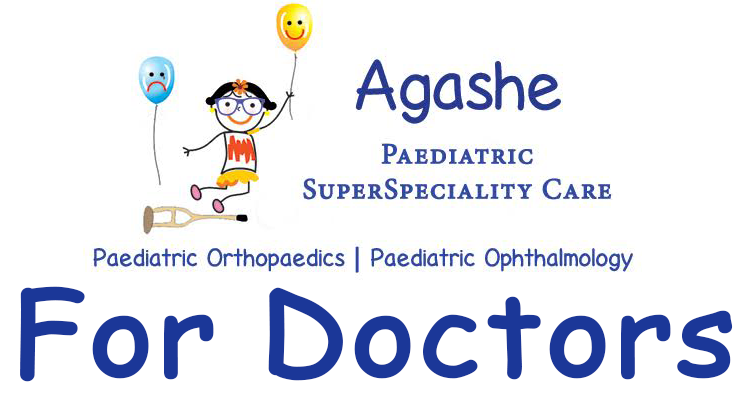Many aches and pains are common in growing children and often warrant nothing more than assurance. However there are certain conditions which warrant a referral to a Paediatric Orthopaedic Surgeon. Below is a general guideline for the same:
Referral Guidelines for Paediatricians to Pediatric Orthopaedic Subspecialty
| Assessment by Paediatrician | Refer for a possible Diagnosis of |
|---|---|
| * No arch present when standing tiptoe / when not weight bearing * Limited Subtalar motion (9-15 years old) / Convex plantar surface (6-12 months old) |
Flat Foot |
| * Curved lateral border of foot + Stiffness in child > 6 months old * In-toeing with pain / disability * Persistent severe femoral anteversion (increased internal rotation up to 90º and reduced external rotation in prone child with flexed legs) child > 6 years old * Internal tibial torsion (increased thigh foot angle) in child > 6 years old |
In-toeing |
| * Knee pain > 3 weeks duration + Positive X Ray (AP/ Lat / Notch / Skyline) * Positive hip exam (especially limited internal rotation) + Positive X Ray (AP / Frog Pelvis) |
Slipped Upper Femoral Epiphysis / Perthes |
| * Knee pain < 3 weeks duration after cutting / pivoting + swelling + limping + locking + X Ray (AP / Lat / Notch / Skyline) | Injury |
| * Angle of Trunk Rotation >5 + X Ray Standing (PA / Lateral) shows: curve > 10 degrees (in child 0-10 years old) or curve > 20 degrees (in child 11 years or older) |
Scoliosis |
As per AAP Survey1, 78% pediatricians say it is very important to use a pediatric trained subspecialist when referring for developmental dysplasia of the hip
1 Periodic Survey #67 Of Fellows American Academy of Pediatrics Division of Health Services Research presented at the Pediatric Academic Societies annual meeting, May 2008








